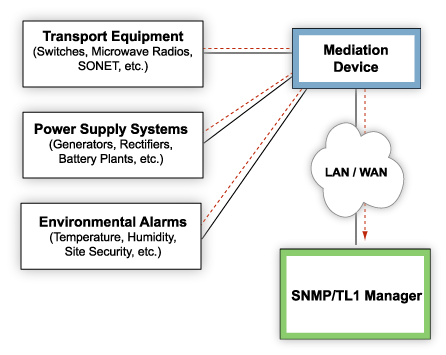Download our free SNMP White Paper. Featuring SNMP Expert Marshall DenHartog.
This guidebook has been created to give you the information you need to successfully implement SNMP-based alarm monitoring in your network.
1-800-693-0351
Have a specific question? Ask our team of expert engineers and get a specific answer!
Sign up for the next DPS Factory Training!

Whether you're new to our equipment or you've used it for years, DPS factory training is the best way to get more from your monitoring.
Reserve Your Seat Today
A protocol is just a format for encoding info. It is usually in the form of a data packet containing the payload data (the actual message) and a header (extra bits containing address and routing info specific to the protocol).
Protocol mediation works by putting a new header on the payload data. The device gets the alarm input, takes out the payload data, re-encodes the payload data in the format of another protocol, and sends the re-encoded alarm to the alarm master. All of your data remains the same, but it is now formatted in a way that your upstream equipment can understand.
For our reasons, this means taking an alarm in TABS, TBOS, etc., and making it an SNMP trap message or TL1 autonomous message. Contact closures, which aren not in the form of a framed protocol, are directly encoded as SNMP traps or TL1 autonomous messages.
The protocol mediation device knows how to do this because it has a database that relates one alarm protocol to another.
By uniting your telemetry under one protocol like SNMP, you are able to seamlessly communicate with one master. This allows for a simpler network structure as well as allowing you to keep your legacy equipment in service longer, since their protocols can be translated to the latest IP-based standards.
Those are the keys of how protocol mediation works. So what kind of protocol mediation solution should you choose for your network? Let's take a closer look at possible solutions on the following pages.